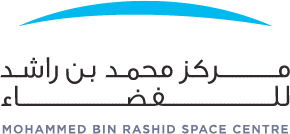Mission & Training:
AlNeyadi along with his Crew-6 team launched from Cape Canaveral in Florida on March 2, and is currently undergoing the longest Arab space mission in history. AlNeyadi also recently became the first Arab to undertake a spacewalk during Expedition 69, along with NASA astronaut Stephen Bowen.

Spacewalk, 2023
During the spacewalk, which lasted 7 hours and 1 minute, they successfully completed a series of preparatory tasks which included routing power cables, as a precursor to the installation of the iROSA.
In preparation for the ISS mission, AlNeyadi trained at the Yuri Gagarin Cosmonaut Training Centre at Star City in Moscow, based on an agreement with Roscosmos. AlNeyadi underwent rigorous physical,technical and mental mission preparation training included zero-gravity simulation, centrifuge simulation to ready them for the high g-forces, Soyuz simulation, ISS simulation, and winter and water survival training in case of forced landing in an unexpected location. He also learned Russian, as it is the main communication language used aboard the Soyuz spacecraft.

Survival Training, 2019
AlNeyadi further received training in Houston, Texas and Cologne in Germany, as part of partnership agreements with major space agencies, including NASA, ESA, and JAXA. The training programme for the ISS mission, which lasted close to 5 years, included training on all sections and units of the ISS and how to use its devices and equipment, emergency fire drills, dealing with low pressure and ammonia leak inside the station, in addition to survival training if the capsule had to land in a cold forest.

ESA Training, 2022
AlNeyadi was also trained on the spacesuit, weighing up to 10 kgs and how to wear at zero gravity. He was also trained to perform daily tasks such as preparing food, how to use the camera to document events, taking pictures of the Earth, communicating with the ground stations, and other day-to-day tasks during the mission. AlNeyadi underwent more than 90 courses, with the total number of training hours exceeding 1,400 hours.

He further trained in the Neutral Buoyancy Laboratory (NBL), passed evaluations which included using the Extravehicular Mobility Unit (EMU), maintenance of the International Space Station, the Incapacitated Crew Rescue (ICR), and completed theoretical and practical training sessions on the T-38 jet.
He was granted the NASA astronaut’s pin after completing around 20 months of general training at NASA’s Johnson Space Center.



